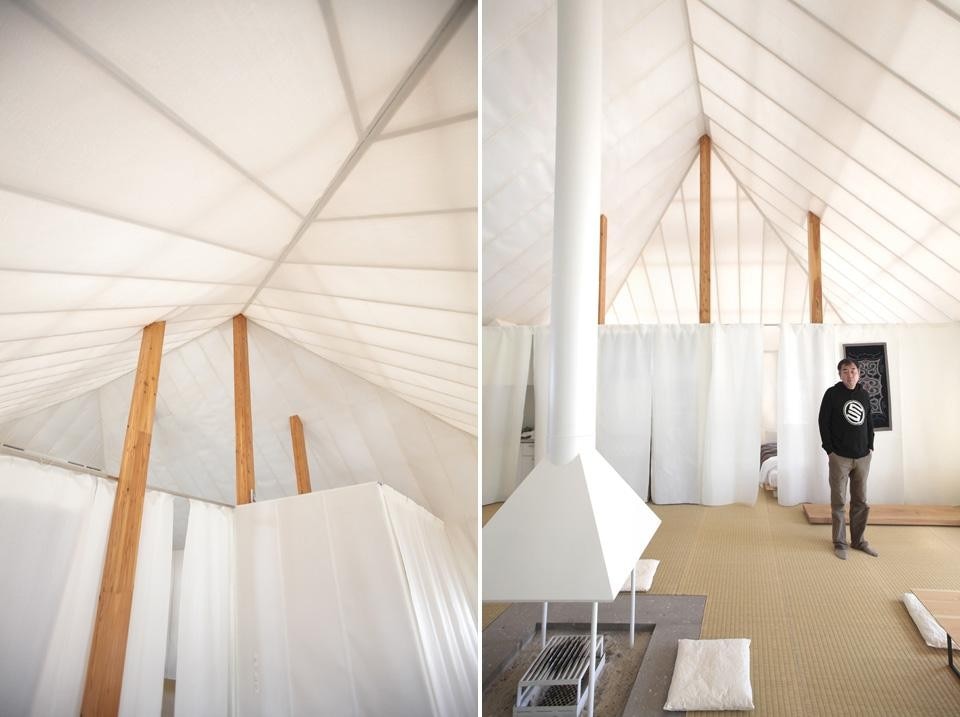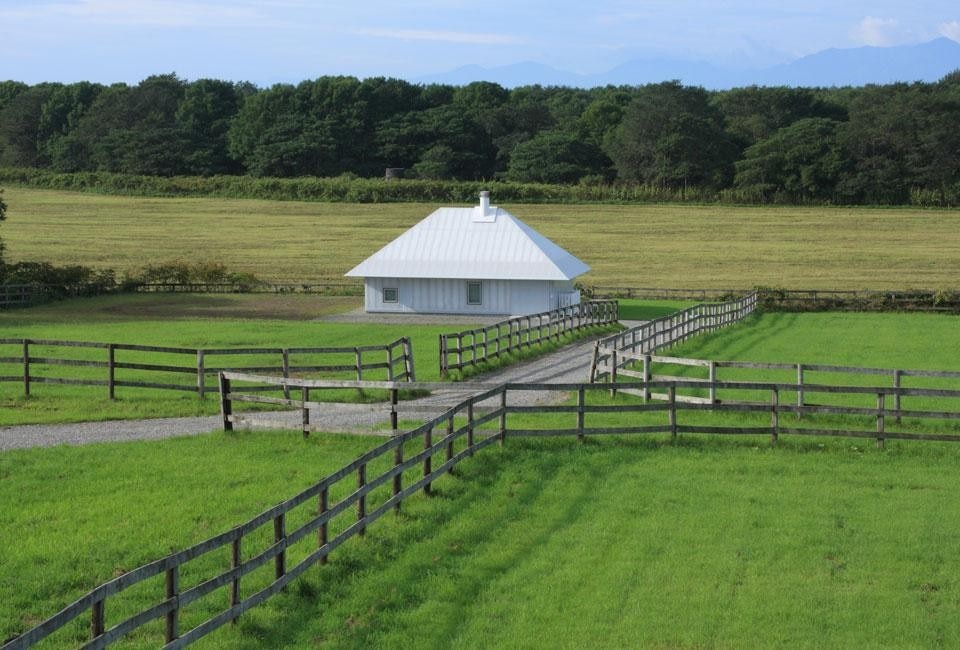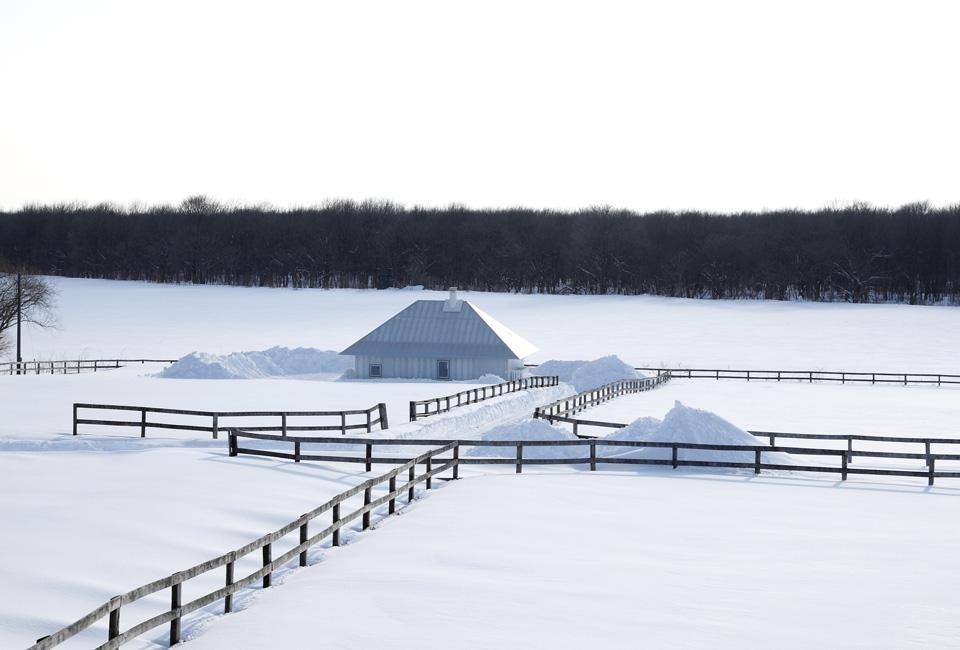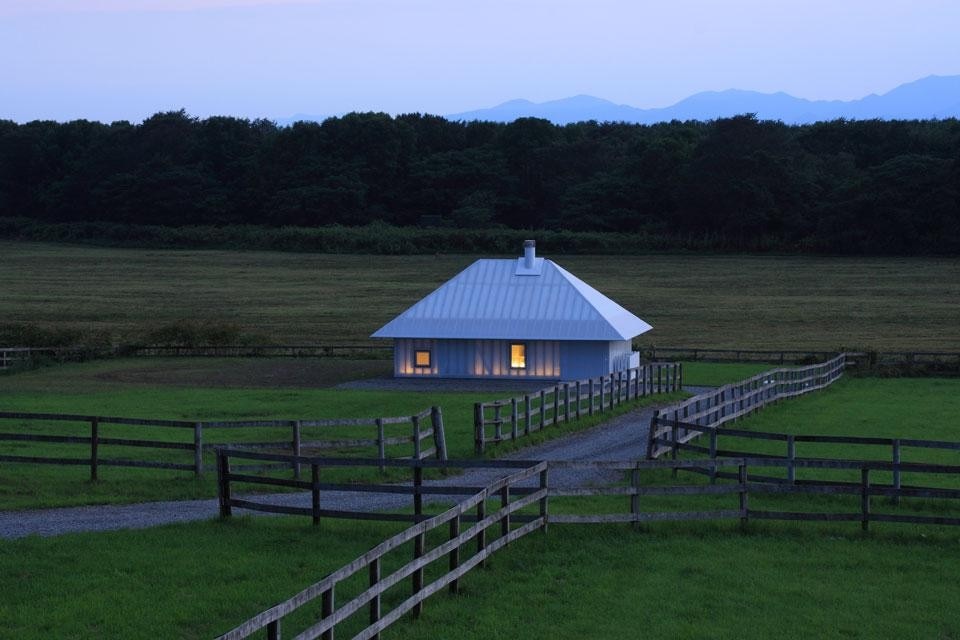The village, located in Hokkaido, hosts the Meme Meadows Centre for Research of Environmental Technologies, which used to be a facility to breed race-horses before. Founded by LIXIL JS Foundation, the aim is to contribute improving people's comfort and lifestyles within long span projects of radical ecological concepts. Kuma's experimental house is the first in the Meme Meadows series of innovative residential design solutions for extreme climate conditions. The house belongs to a series of interventions by the Japanese architect in a few existing facilities, including the renovation of a restaurant, a lodge and multipurpose space.
Unlike the hot, humid summers and mild, warm winters of Japan's main island Honshu, Hokkaido is known for cool, dry summers and icy winters. The severe climate of northern Japan fostered the Ainu, the island's first inhabitants, to create dwelling typologies that are distinctively different from central Japan's traditional post and beam wooden construction, conceived mainly for hot and humid summer conditions. Kuma took this information as an opportunity to reinterpret the traditional Ainu chise house. Chise, which literally translates as "house" or "home" in the Ainu language, signifies a domestic metaphor of welcoming. The chise is both a "grass house" and an "earth house", entirely enveloped with a thick layer of dried grass for thermal insulation, and flooring mats laid directly on the ground. Its effectiveness in an extremely cold climate resides on accumulating the heat radiated from a central ever burning fireplace — which organizes a singular space around it — and the thick layering of materials.
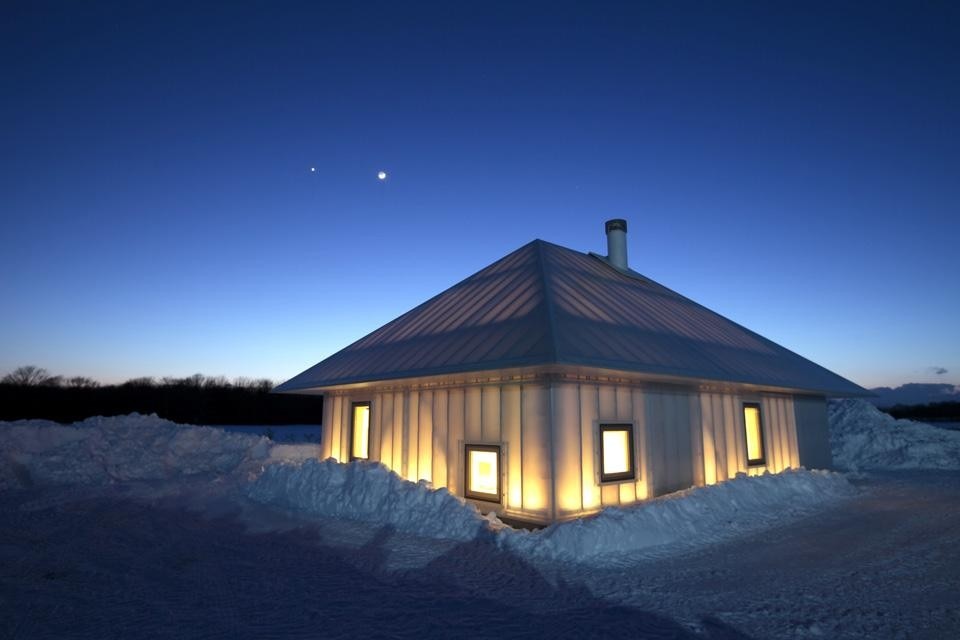
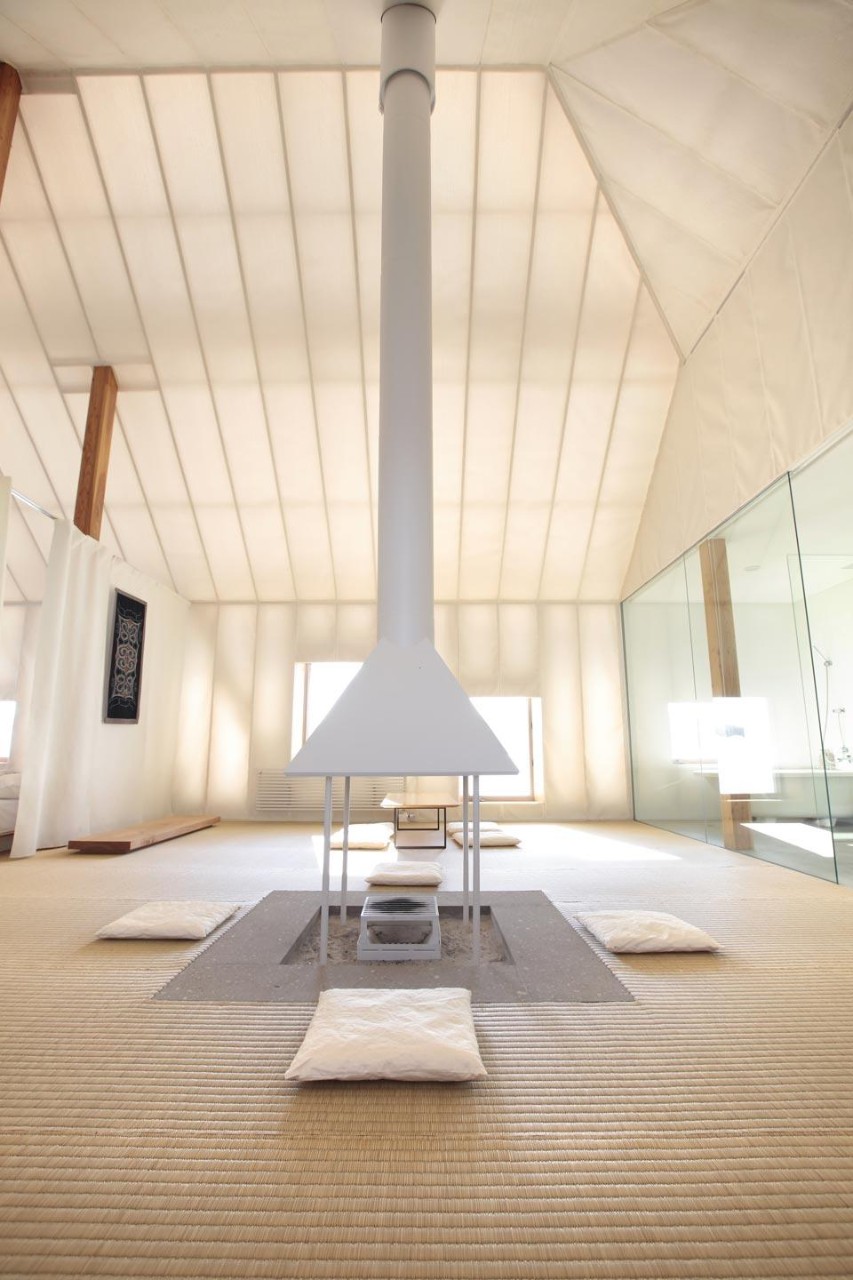
Kuma's house in the Hokkaido meadows echoes the experimental houses made a century ago by Frank Lloyd Wright in American prairies
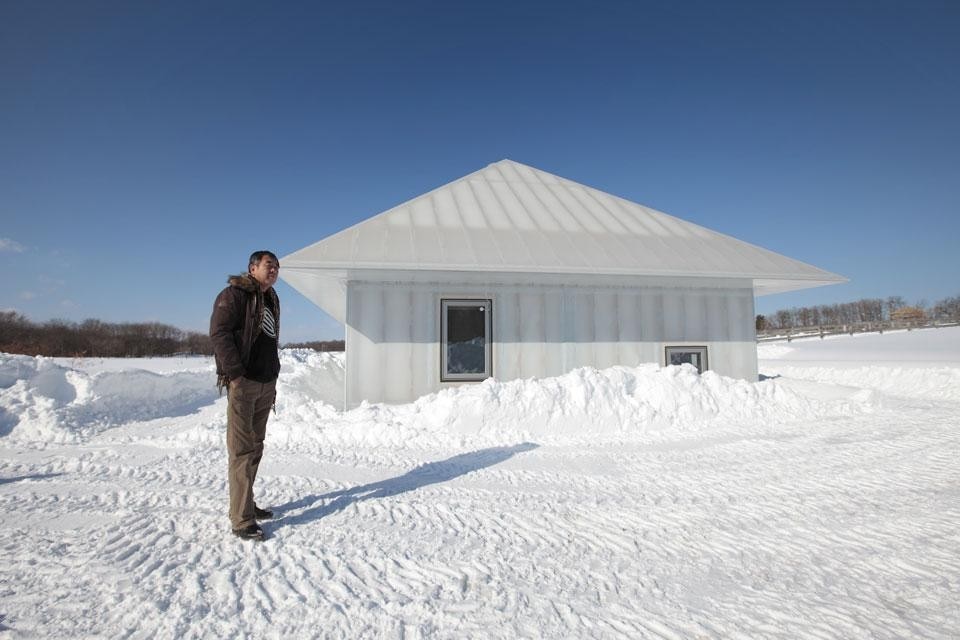
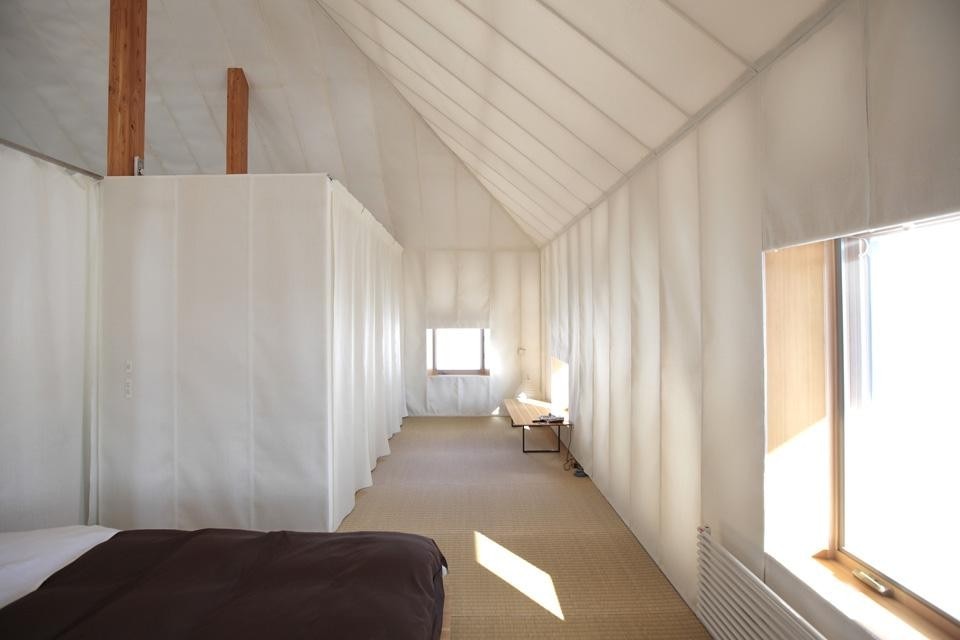
The authors would like to express their sincere thanks to Takumi Saikawa from Kengo Kuma Architects & Associates for providing all materials and information.
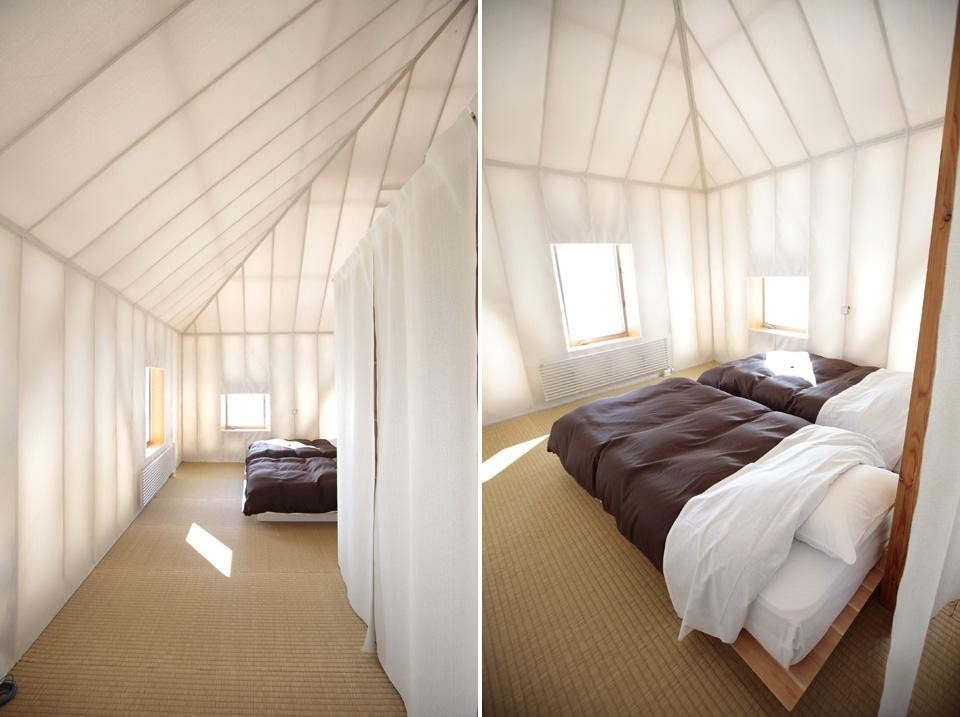
Facility name: Memu Meadows
Project name: Meme Experimental House
Design: Kengo Kuma & Associates / Kengo Kuma, Takumi Saikawa
Technical collaboration: Tomonari Yashiro Laboratory at the University of Tokyo's Institute of Industrial Science / Bumpei Magori
Location: 158-1 Memu, Taikicho, Hirogun, Hokkaido, Japan
Main use: Experimental residence
Floor area: 79,50 square metres
Structure: conventional wooden frame
Completion date: June 2011
